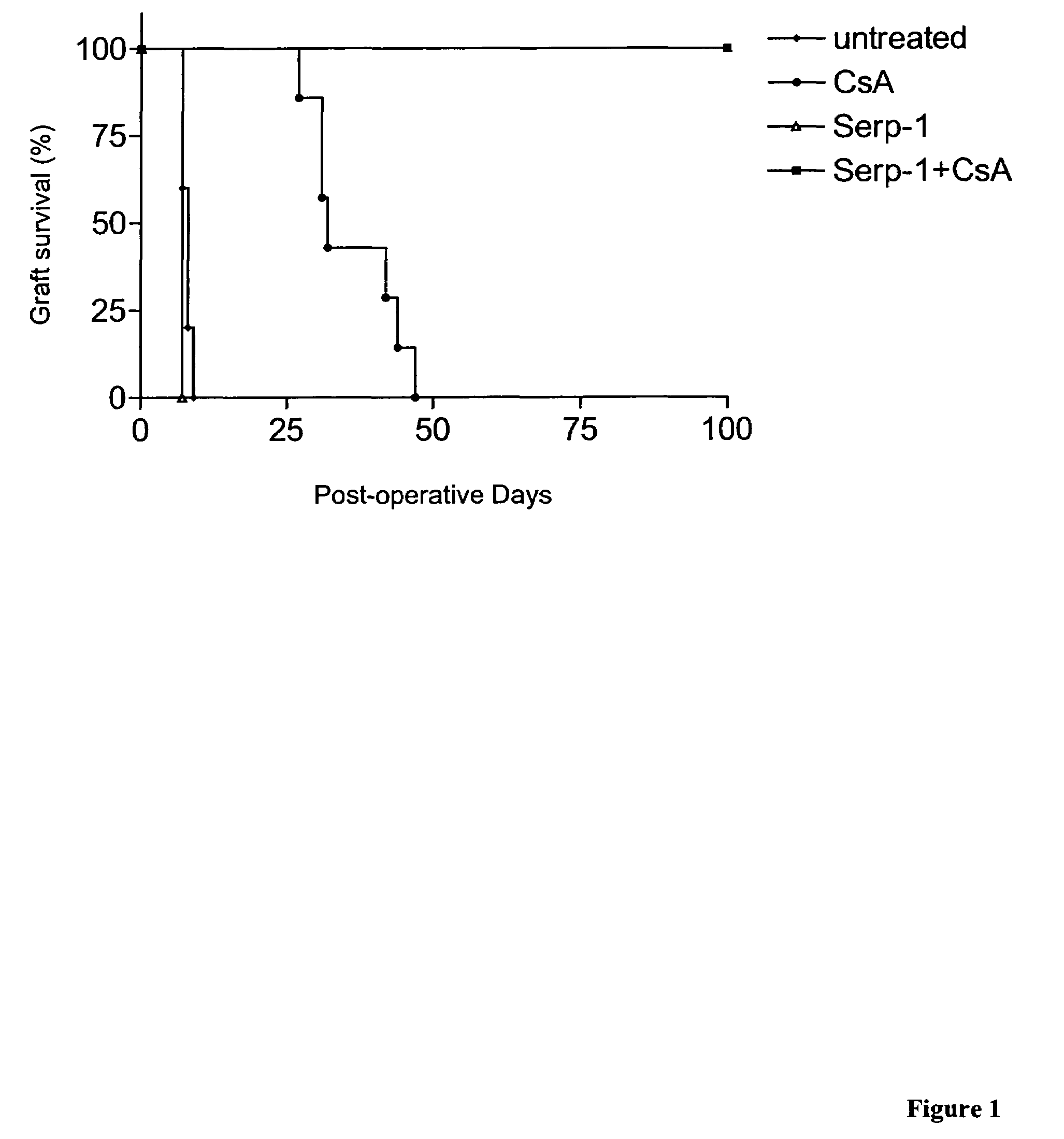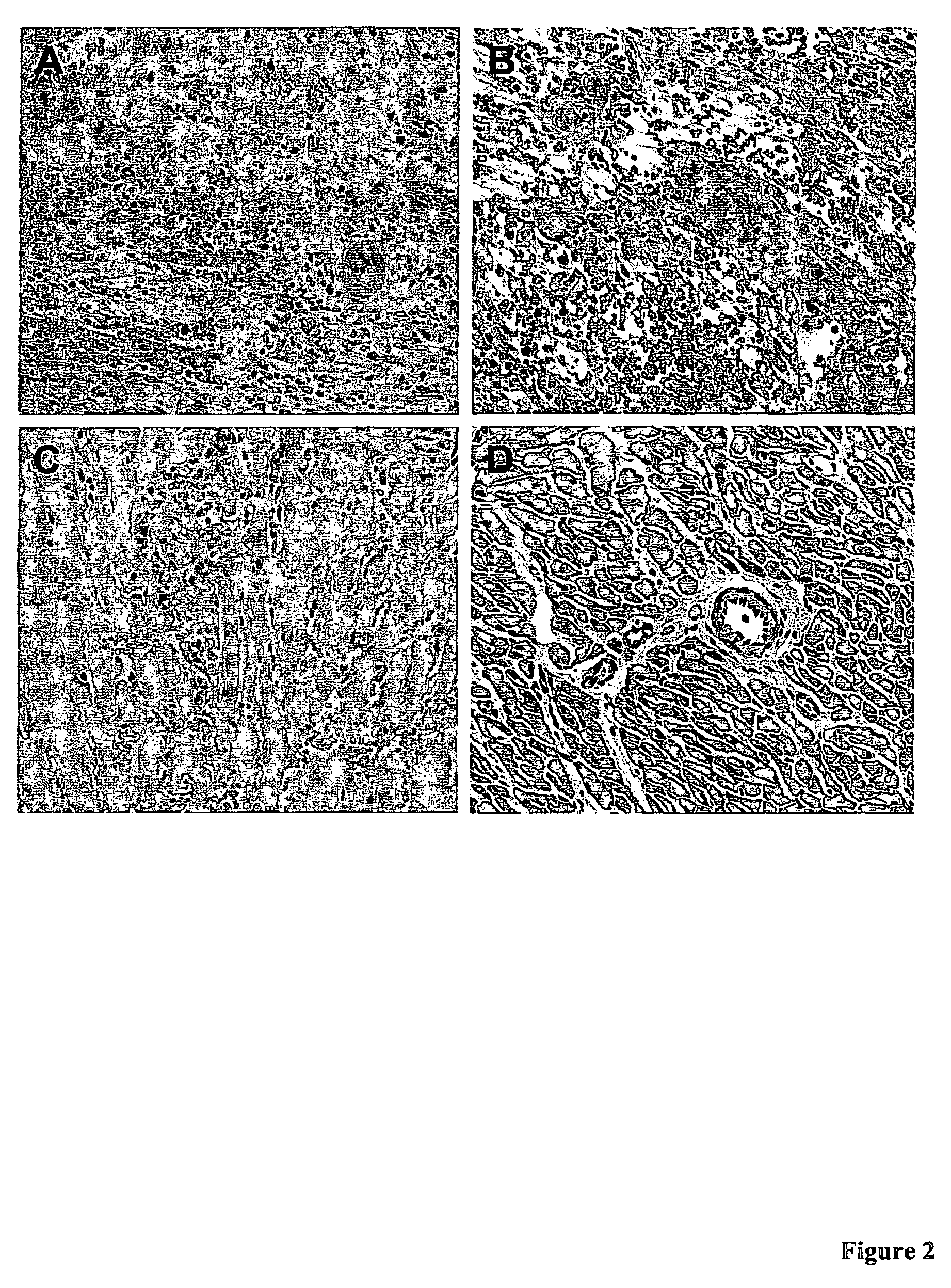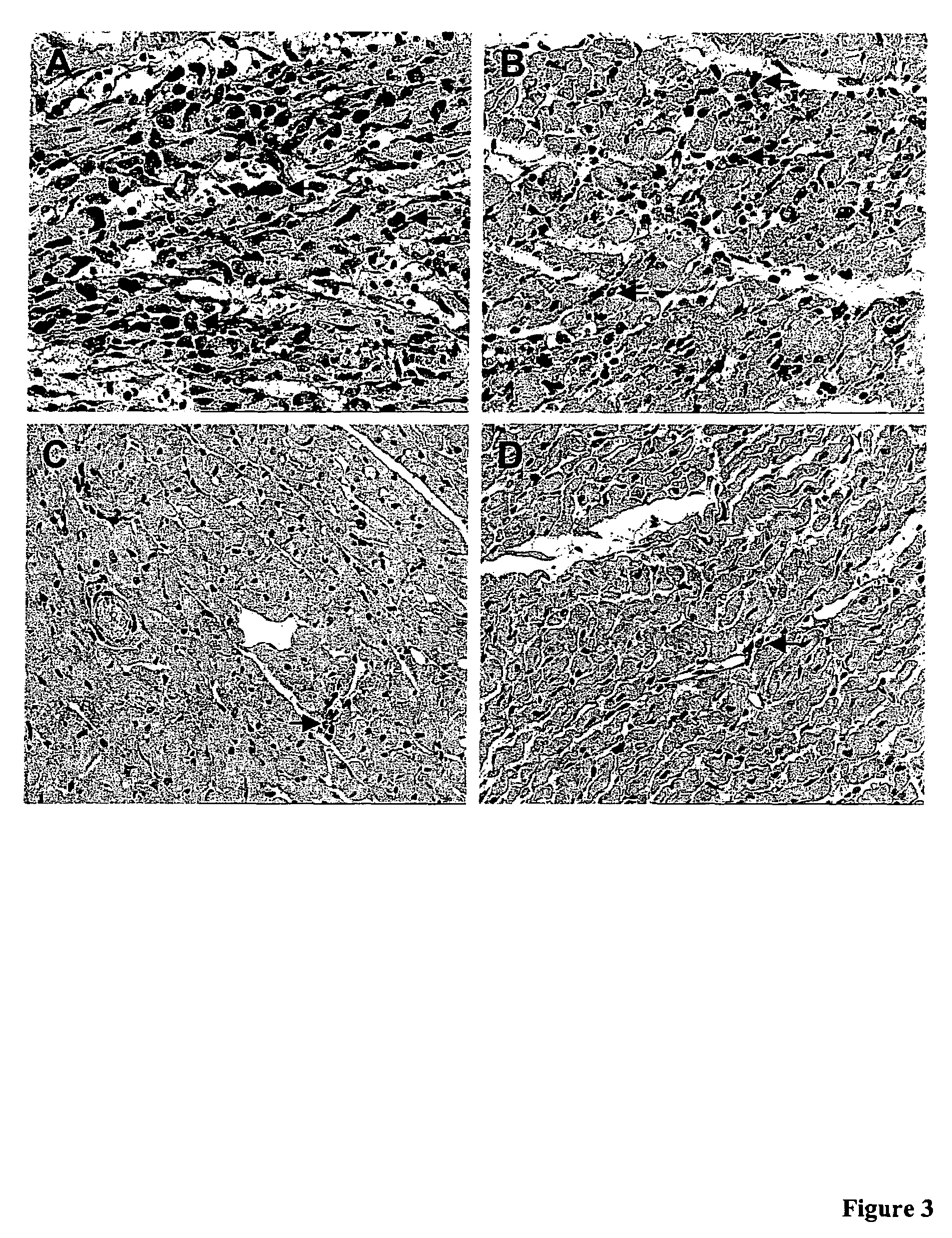Methods for treating transplant rejection
a transplant rejection and treatment method technology, applied in the field of transplant rejection treatment methods, can solve the problems of kidney and liver toxicity, impediment to long-term graft survival, loss of biological functioning or the death of the transplanted organ,
- Summary
- Abstract
- Description
- Claims
- Application Information
AI Technical Summary
Problems solved by technology
Method used
Image
Examples
example 1
Serp-1 / CsA Prevented Chronic Allograft Rejection in a Rat Kidney Model
[0052]F344 male rats served as donors and Lewis rats as recipients for orthotopic kidney transplant. Recipients' native kidneys were removed at the time of surgery (FIG. 1). Animal survival depended entirely on the function of the transplanted kidney. Animals received subtherapeutic CsA (0.75 mg / kg sc) for 10 days to prevent initial acute rejection. Greater than 60% of animals were expected to survive to post-operative day (POD) 140 and exhibit features of chronic renal allograft rejection (i.e. intimal thickening, glomerular sclerosis, tubular atrophy, interstitial as well as cortical fibrosis). These animals were included in our final analysis.
Groups
[0053]Group 1: F344 to Lewis with CsA, n=10 (Control);
[0054]Group 2: F344 to Lewis with CsA + Serp-1 10 ng / g IV Post-Operative Day,(POD) 0-10-intermediate dose, n=12;
[0055]Group 3: F344 to Lewis with CsA + Serp-1 50 ng / g IV POD 0-100high dose, n=12;
Assessment
[0056]1)...
example 2
[0066]Treatment of recipient rats in a model of heterotopic heart transplantation with Serp-1 and Neoral® Cyclosporin (CsA) prevented the development of graft vascular disease (FIG. 3).
[0067]The most commonly used model for preclinical research on graft-vascular disease is a model in which a heterotopic heart transplantation is performed in MHC mismatched rats. In this model, rodents treated with cyclosporin A for only the first 7 days after transplantation, developed graft vascular disease when analyzed after sacrifice at postoperative day 90.
[0068]Based on our most recent experience with this model, we used the PVG to ACI strain combination in which the recipient was treated with 7.5 mg / kg Neoral® per gavage from day 0 to day 9. In this model the incidence of acute rejection (and therefore loss of the animal) was 30%. The average luminal narrowing in this model was 50% at day 90.
[0069]For the model of heterotopic heart transplantation in rats the pulmonary veins and the venae cava...
example 3
[0100]The efficacy of Serp-1 (1 ng / g-10 μg / g) in combination with Cyclosporin A (at doses of 5 mg / kg / day-20 mg / kg / day) for the treatment of acute and chronic transplant rejection were assessed in a heterotopic mouse heart allograft transplant model (FIG. 6).
Details of Animal Surgical protocols:
[0101]The heterotopic heart transplant model was performed as previously described. Transplantation 62:1267). Briefly, a median sternotomy was performed in the donor, and the right and left superior vena cave were ligated. The ascending aorta and pulmonary artery of the donor were anastomosed end to side to the recipient aorta and inferior vena cava, respectively.
Acute Rejection Model:
[0102]For the acute rejection model, male inbred mice C57BL / 6 (H2b) and BALB / c(H2d) were used as the donor and the recipient, respectively. This strain combination was mismatched in both major and minor MHC. We have previously demonstrated that the graft was rejected in 9 days after grafting zhong, et al. (supra)...
PUM
| Property | Measurement | Unit |
|---|---|---|
| weight gains | aaaaa | aaaaa |
| time | aaaaa | aaaaa |
| time | aaaaa | aaaaa |
Abstract
Description
Claims
Application Information
 Login to View More
Login to View More - R&D
- Intellectual Property
- Life Sciences
- Materials
- Tech Scout
- Unparalleled Data Quality
- Higher Quality Content
- 60% Fewer Hallucinations
Browse by: Latest US Patents, China's latest patents, Technical Efficacy Thesaurus, Application Domain, Technology Topic, Popular Technical Reports.
© 2025 PatSnap. All rights reserved.Legal|Privacy policy|Modern Slavery Act Transparency Statement|Sitemap|About US| Contact US: help@patsnap.com



